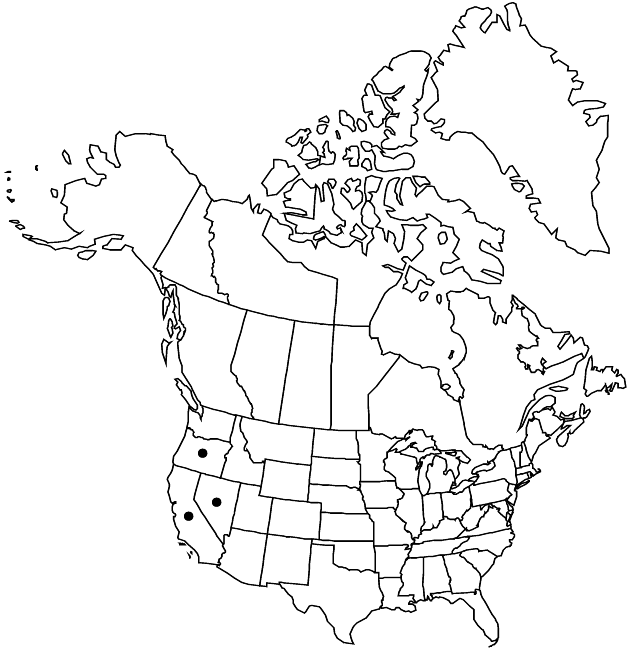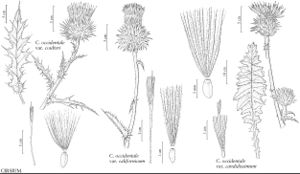Difference between revisions of "Cirsium occidentale var. candidissimum"
Contr. Gray Herb. 53: 22. 1918.
FNA>Volume Importer |
imported>Volume Importer |
||
| (One intermediate revision by the same user not shown) | |||
| Line 8: | Line 8: | ||
}} | }} | ||
|common_names=Snowy thistle | |common_names=Snowy thistle | ||
| + | |special_status={{Treatment/ID/Special_status | ||
| + | |code=F | ||
| + | |label=Illustrated | ||
| + | }}{{Treatment/ID/Special_status | ||
| + | |code=E | ||
| + | |label=Endemic | ||
| + | }} | ||
|basionyms={{Treatment/ID/Basionym | |basionyms={{Treatment/ID/Basionym | ||
|name=Carduus candidissimus | |name=Carduus candidissimus | ||
| Line 63: | Line 70: | ||
|publication title=Contr. Gray Herb. | |publication title=Contr. Gray Herb. | ||
|publication year=1918 | |publication year=1918 | ||
| − | |special status= | + | |special status=Illustrated;Endemic |
| − | |source xml=https:// | + | |source xml=https://bitbucket.org/aafc-mbb/fna-data-curation/src/2e0870ddd59836b60bcf96646a41e87ea5a5943a/coarse_grained_fna_xml/V19-20-21/V19_121.xml |
|tribe=Asteraceae tribe Cardueae | |tribe=Asteraceae tribe Cardueae | ||
|genus=Cirsium | |genus=Cirsium | ||
Latest revision as of 19:47, 5 November 2020
Plants erect or ± bushy, usually 40–200 cm, (branches often stiffly spreading), densely white-tomentose. Leaf faces densely white-tomentose. Heads sometimes in tight clusters at ends of peduncles, short- to long-pedunculate, elevated well above proximal leaves. Involucres as wide as to longer than wide, usually 2–6 cm, persistently and densely white-tomentose. Phyllaries imbricate or subequal, outer usually very long, spreading to reflexed, mid apices usually 1.5–3 cm × 2–3 mm, rigidly spreading or reflexed. Corollas red (rarely white or pink), 26–40 mm. 2n = 30, 31, 32, 33, 34, 60.
Phenology: Flowering summer (Apr–Sep).
Habitat: Coastal scrub, grassy openings in montane coniferous forests, arid woodlands, sagebrush scrub, roadsides
Elevation: 150–1500 m
Distribution

Calif., Nev., Oreg.
Discussion
Variety candidissimum is a very attractive taxon with snowy, white-tomentose foliage and involucres and bright red corollas. It comes into contact with var. venustum in the North Coast Ranges of California, and individuals of some populations are difficult to place with confidence into either variety. Some plants of northern Nevada are also intermediate in their features between var. candidissimum and var. venustum.
Most populations of var. candidissimum occur in the mountains of northern California. Upland populations range from the Klamath Range of southwestern Oregon to the northern North Coast Ranges of northern California and eastward through the Siskiyou and Cascade ranges and the northern Sierra Nevada to mountains of the Basin and Range Province in northeastern California and adjacent northwestern Nevada. An isolated occurrence in the Blue Mountains of northeastern Oregon may represent an introduction.
A remarkable lowland population from the Carmel Highlands range of central coastal California occurs on shrub-covered hillsides adjacent to coastal redwood groves. Its habitat is markedly different from that of the upland populations, but I have found no morpologic basis for recognizing it as a distinct taxon. One plant in the population was observed to have purple instead of red corollas–perhaps a result of past hybridization with var. occidentale.
Heads of var. candidissimum are actively visited by hummingbirds as well as a variety of insects (P. L. Barlow-Irick 2002).
Selected References
None.
